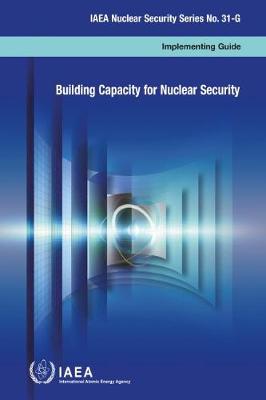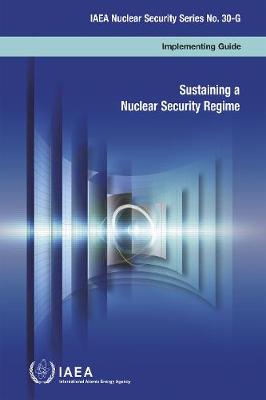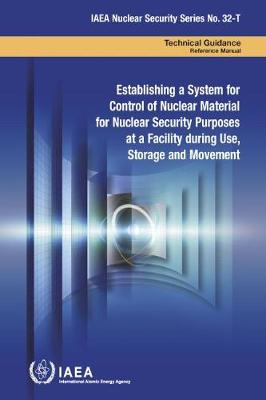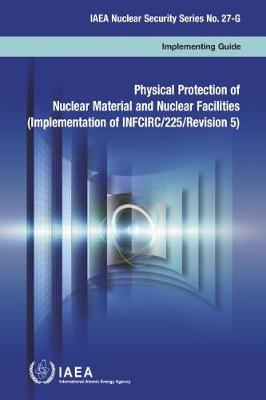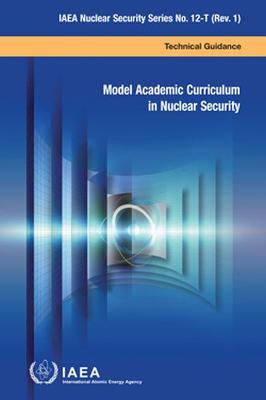IAEA Nuclear Security
6 total works
Each State has the primary responsibility to build the capacity of organizations and people in order to develop, implement, and sustain a nuclear security regime. To discharge its responsibilities, the State has to strengthen its capacity at national, organisational and individual levels. Specifically, the State has to be able to enhance the competences and capabilities of relevant stakeholders in fulfilling their responsibilities within the nuclear security regime. Such endeavour involves various elements in capacity building, ranging from education and training to the development of knowledge network. This publication is intended to serve as a reference document for Member States to develop a national capacity building strategy for nuclear security. It addresses all organizations involved in nuclear security and reflects the multidisciplinary and cross-institutional nature of this task, as well as the long term efforts that are required.
This publication addresses the sustainability of all aspects of a national nuclear security regime, including those relating to nuclear material and nuclear facilities, other radioactive material and associated facilities, and nuclear and other radioactive material out of regulatory control. The publication is relevant for States that have established a nuclear security regime as well as for States that are in the process of establishing one. It includes guidance on how to address challenges in sustaining a nuclear security regime over time. It also addresses the initial development and implementation of the regime, particularly where sustainability can be built into it as part of its design.
Developing Regulations and Associated Administrative Measures for Nuclear Security
by Iaea
Published 30 January 2018
This publication aims to assist States to identify the responsibilities of those involved in nuclear security so that suitable regulations, agreements and associated administrative measures may be developed for establishing and sustaining an effective nuclear security regime. The publication is structured to provide an overview of the most important aspects to be covered by a State's legislative and regulatory framework for governing nuclear security. States may therefore use this publication to undertake a gap analysis of their legislative and regulatory framework for nuclear security in order to take actions to update their framework as necessary.
Control of nuclear material comprises the administrative and technical measures applied to ensure that nuclear material is not misused or removed from its assigned location without approval and/or without proper accounting. This publication, which builds upon the Implementing Guide IAEA Nuclear Security Series No.25-G , focuses on the control of nuclear material during storage, use and movement using a facility's nuclear material accounting and control (NMAC) system. It describes practical measures for controlling nuclear material for nuclear security purposes during all activities at a facility, including movements, and how to use a graded approach in applying such measures. The technical guidance provided is targeted at States and their competent authorities on how to use individual elements of the NMAC system, but will be also useful for persons responsible for designing, operating and assessing nuclear security systems, physical protection of nuclear facilities, nuclear security management, operators and managers of NMAC systems; as well as for those preparing associated regulations; and persons responsible for computer security at nuclear facilities.
This publication is the lead Implementing Guide in a suite of guidance on implementing the Nuclear Security Recommendations on Physical Protection of Nuclear Material and Nuclear Facilities, INFCIRC/225/Revision 5 , IAEA Nuclear Security Series No. 13 . It provides guidance and suggestions to assist States and their competent authorities in establishing, strengthening and sustaining their national physical protection regime and implementing the associated systems and measures, including operators' physical protection systems.
This publication provides a model academic curriculum covering the entire spectrum of nuclear security topics for a master's degree programme or for an academic certificate programme in nuclear security. The first edition, entitled Educational Programmes in Nuclear Security, was published in 2010. Since then, the body of knowledge in the field of nuclear security has grown substantially and the IAEA Nuclear Security Series has expanded to cover more topics. The current publication takes into account the latest IAEA guidance, as well as feedback from the International Nuclear Security Education Network (INSEN) community and other international experts. The publication can be used by university curriculum developers as well as faculty and instructors from institutions that are implementing or considering educational programmes in nuclear security.
